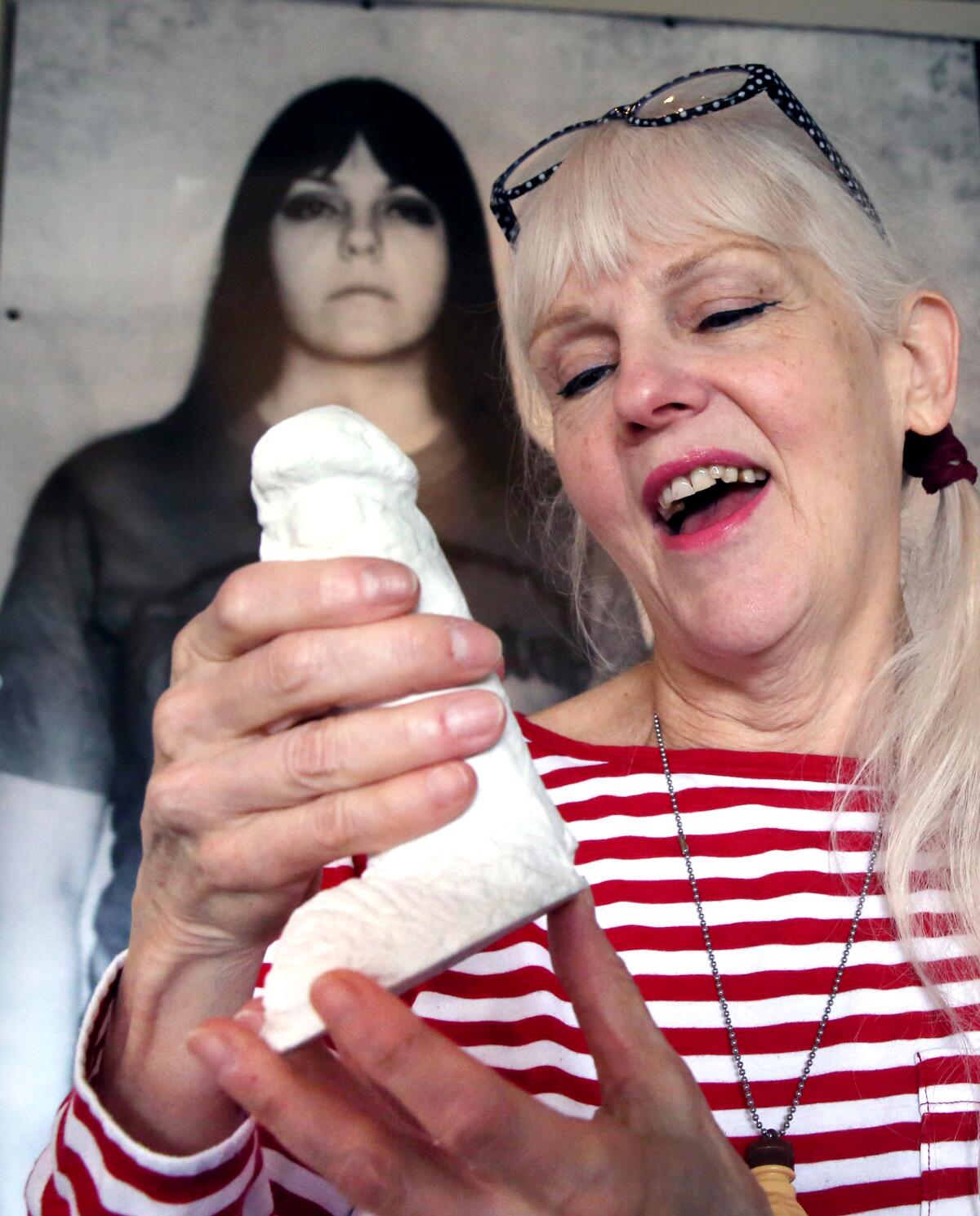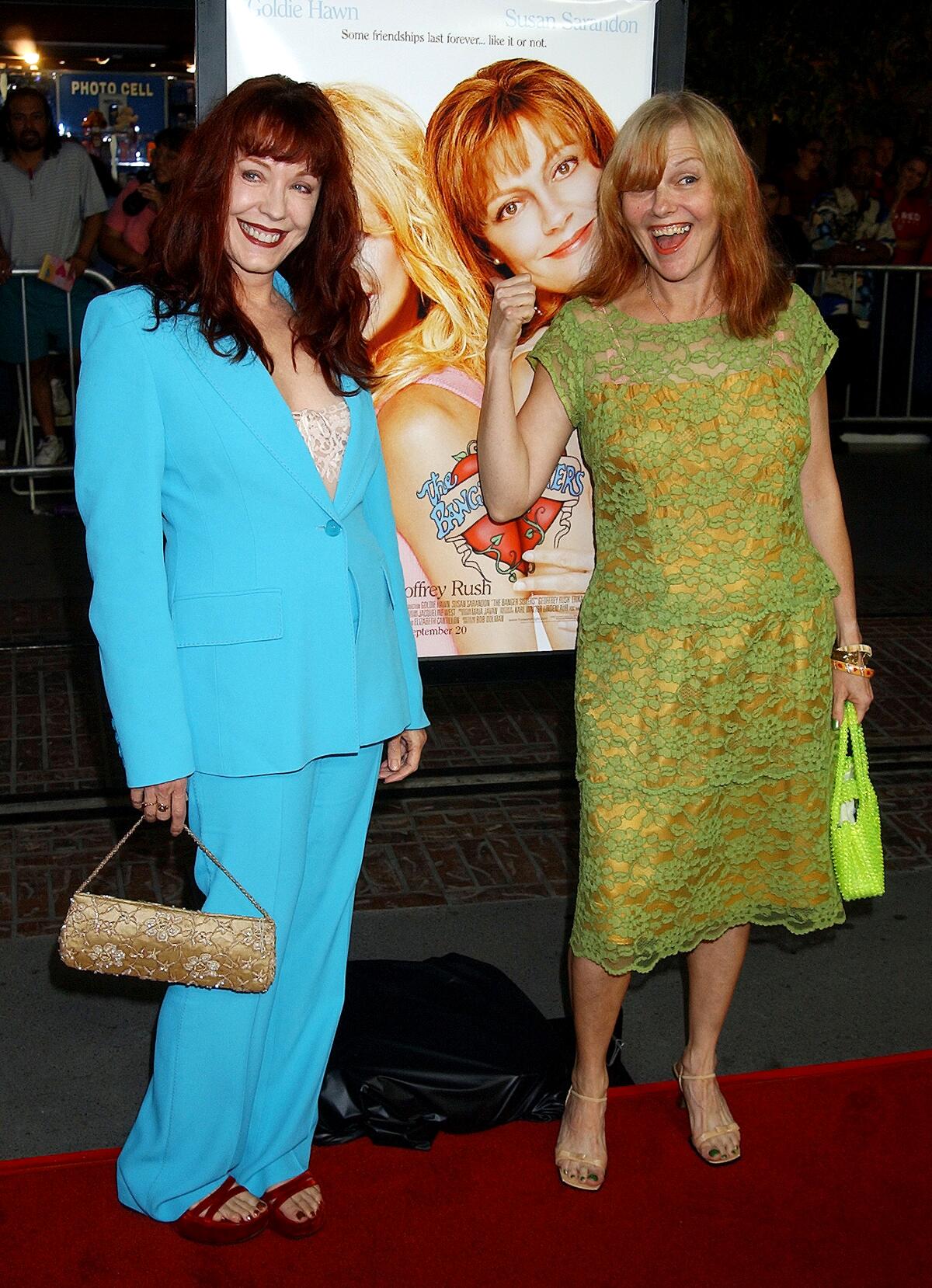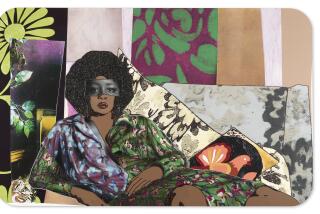Cynthia Plaster Caster, artist known for rock-star penis sculptures, dies at 74

- Share via
Cynthia Albritton, who as Cynthia Plaster Caster successfully channeled a teenage desire to lose her virginity to a rock star into a lifelong project creating casts of their erect penises, died on Thursday in her native Chicago after an undisclosed illness, according to a press release. She was 74.
Starting in 1968, Albritton began compiling a vast collection of phalluses enabled by private sessions with rockers including Jimi Hendrix, the MC5’s Wayne Kramer, Jello Biafra of the Dead Kennedys and dozens more.
“It was the ’60s. I was a virgin. I was horny. It was the dawn of the sexual revolution,” Albritton said in 2000 in an interview at the first show of her work. “I wanted to fall in love with a British rock star.”
Carrying a black suitcase tagged with an oval “Plaster Casters of Chicago” label, the artist arrived backstage at concerts or at hotels with a ready-made pitch and the tools to make it happen. She was soon being profiled alongside other so-called groupies Pamela Des Barres, Judith Peters (“Miss Mercy”) and Christine Frka (“Miss Christine”) in Rolling Stone.
The new album is a complex treatise on her newfound love and fame, told through a head-spinning mesh of flamenco, hyperpop, hip-hop and Caribbean sounds.
Albritton held the first exhibition of her casts in New York in 2000, and was the focus of “Plaster Caster: The Rock & Roll Adventures of a Super-Groupie,” a 2001 documentary about her work. The artist inspired songs by the likes of KISS (“Plaster Caster”), Jim Croce (“Five Short Minutes”) and dance punk band Le Tigre (“Nanny Nanny Boo Boo”).
“I would ask this band that I was trying to meet if they could help me with my homework assignment,” she told MTV. As she accrued penis casts, her sexual drive was eclipsed by her artistic drive. Frank Zappa was so impressed by her skills that he funded her brief move from Chicago to Los Angeles.
“What started out as a way to meet rock bands ended up turning into a Pop Art form,” Albritton told The Times in 1993. At the time, she was in a legal battle with music executive and former Frank Zappa manager Herb Cohen over ownership of her plaster penises. She prevailed.

Cynthia Albritton was born on May 24, 1947, in Chicago. An only child, she seldom discussed her family life and kept her surname private until the mid-1990s. (In 2000, she said her religious mother, then 84, still had no idea of her daughter’s creative pursuits.) Albritton was studying art at the University of Illinois Chicago when she got an assignment, she told one interviewer. “My teacher asked us to plaster cast something that could retain its shape, and I thought, ‘Why don’t I kill two birds with one stone?’ ”
That single stone begat a legend.
After “preparing” the men, her friend Des Barres wrote in her bestselling memoir “I’m With the Band,” Albritton would “plunge the erect quivering member into a bucket full of slimy white goo called alginate, yank it out the moment it got soft (instantly, I would imagine), pour a mixture of plaster into the gaping hole, and leave it there until it got hard.”
Albritton’s first run of casts occurred during three whirlwind years starting in early 1968, after she practiced on two college friends in preparation for her first attempt at a rock star. A week later she successfully cast Jimi Hendrix in a hotel after a concert in Chicago. “He was a casting dream,” she told Salon in 2000. When some of Hendrix’s pubic hairs “got stuck in the mold,” she continued, “he didn’t freak out at all. Just ... waited for me to pull out one pube at a time.”
In 1969, Albritton’s voice was featured on “Miss Pamela’s First Conversation With the Plaster Casters of Chicago,” a track from “Permanent Damage,” the debut album by all-female experimental rock band the GTOs. Featuring Des Barres, Peters, Frka and other groupies, it helped establish Albritton’s brand.
Before taking a hiatus in 1971, Albritton had successfully cast members of the Kinks, Foghat, Argent, the Beach Boys, Iron Butterfly and the Lovin’ Spoonful, among others.
“As it progressed,” Albritton said, “I got this collector’s impulse to collect more and more. And then people told me it was art, and it is art in the school of Andy Warhol, art repetition.”
Albritton, a longtime resident of Chicago’s Lincoln Park neighborhood, resumed her casting in the 1980s. Her prerequisite for a mold subject was basic: “In my mind, they have to be superheroic and talented. Not just musical. I have a soft spot for artists in general.”

On Facebook, Ronnie Barnett, bassist and co-founder of L.A. pop-punk band the Muffs, recalled the moment in 1993 when he was pursued by Albritton at a Chicago show. “It was adorable how shy she was as she sheepishly asked if I’d like to join her collection.” He described the casting experience as “the beginning of a great friendship,” adding, “It might sound strange, but it was like family.”
That family ultimately included musicians from bands including Loverboy, the Jesus Lizard, Public Image Ltd. and dozens more. According to an interview in Australian publication the Age, when the Mekons’ Jon Langford was cast in 1988, he had a tough time maintaining an erection and asked his girlfriend at the time to “mimic the sound of sesame seeds cooking in a wok.” Recalled Albritton, “[Jon] loves that smell. And it totally worked.”
Albritton nearly lost her collection in the early 1970s. After a burglary at her Hollywood apartment, she and Zappa asked Cohen to vault the phalluses. Cohen accepted, and then claimed ownership because of alleged debts accrued by Zappa. Albritton successfully sued to recover the casts in 1991.
“What’s going on here isn’t just a fight over art,” Albritton told The Times in 1993 as the suit was going to trial. “It’s more like a child custody battle. These things aren’t just pieces of plaster to me — they’re like my children. Each one holds precious memories for me.”
Des Barres testified on her behalf. “What Cynthia did is as much a part of rock lore as what any record producer or engineer or manager did,” she told The Times in advance of her testimony. “A hundred years from now when people look back on the ’60s, Cynthia will be remembered as an important pop artist.”
In 2000, Albritton directed her focus to the female form, and for the next 13 years cast the breasts of musicians including L7’s Suzi Gardner, Stereolab’s Laetitia Sadier, Karen O of the Yeah Yeah Yeahs and Sally Timms of the Mekons.
To many, Albritton’s use of sexual power to claim the objects of her desire made her a feminist icon, but she didn’t see it that way. “I discovered my feminism in different ways. I was never doing it to turn the tables or be on top or anything,” she told Salon. “In a way, I felt like I was in the exalted presence of a supreme being, and this could bring them down to the same level, the same page [as me]. But it wasn’t an empowerment thing.”
Rather, she concluded, “I’m saying, ‘Look at this chorus line of gorgeous penises, left and right and swirling around. Aren’t they pretty?’ That’s all.”
More to Read
The biggest entertainment stories
Get our big stories about Hollywood, film, television, music, arts, culture and more right in your inbox as soon as they publish.
You may occasionally receive promotional content from the Los Angeles Times.












